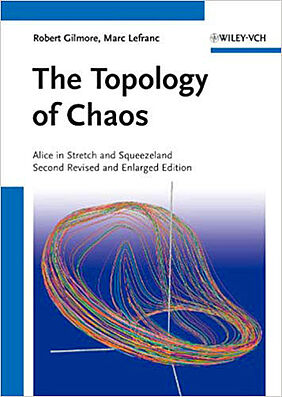The Topology of Chaos
DYSCO Vie du labo Parutions
Auteurs :
- Marc LEFRANC (PhLAM)
- Robert GILMORE (Department of Physics - Drexel University)
Éditeurs :
- John Wiley & sons, 2002
- Wiley-VCH Mannheim, 2002
Résumé :
A new approach to understanding nonlinear dynamics and strange attractors :
The behavior of a physical system may appear irregular or chaotic even when it is completely deterministic and predictable for short periods of time into the future. How does one model the dynamics of a system operating in a chaotic regime ? Older tools such as estimates of the spectrum of Lyapunov exponents and estimates of the spectrum of fractal dimensions do not sufficiently answer this question. In a significant evolution of the field of Nonlinear Dynamics, The Topology of Chaos responds to the fundamental challenge of chaotic systems by introducing a new analysis method-Topological Analysis-which can be used to extract, from chaotic data, the topological signatures that determine the stretching and squeezing mechanisms which act on flows in phase space and are responsible for generating chaotic data. Beginning with an example of a laser that has been operated under conditions in which it behaved chaotically, the authors convey the methodology of Topological Analysis through detailed chapters on :
* Discrete Dynamical Systems : Maps
* Continuous Dynamical Systems : Flows
* Topological Invariants
* Branched Manifolds
* The Topological Analysis Program
* Fold Mechanisms
* Tearing Mechanisms
* Unfoldings
* Symmetry
* Flows in Higher Dimensions
* A Program for Dynamical Systems Theory

